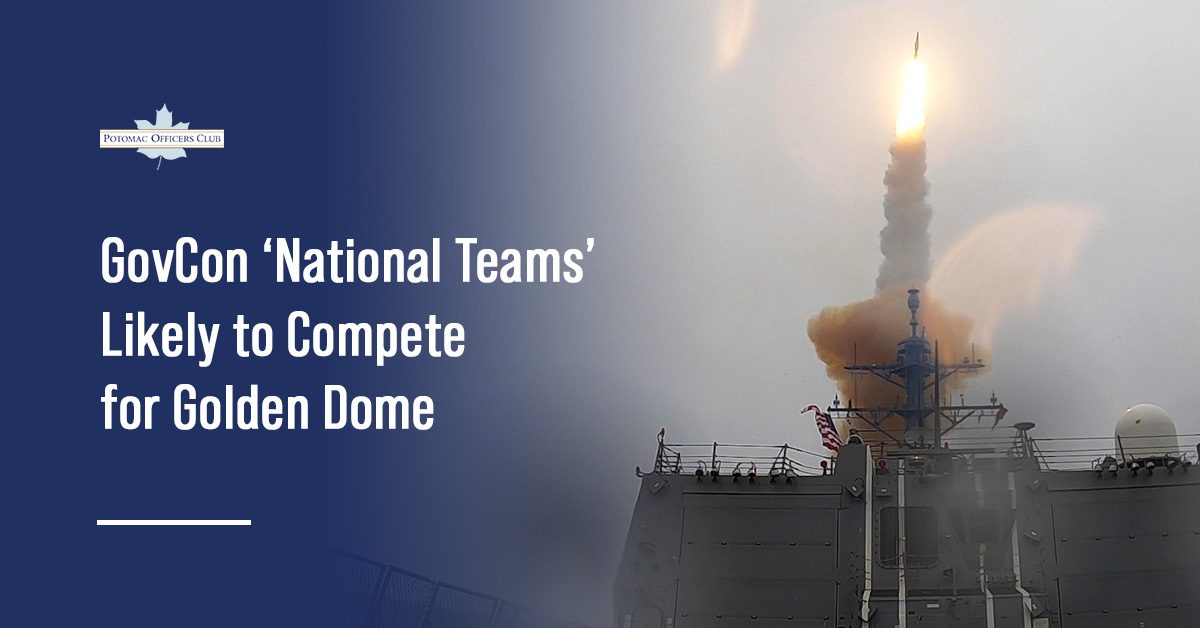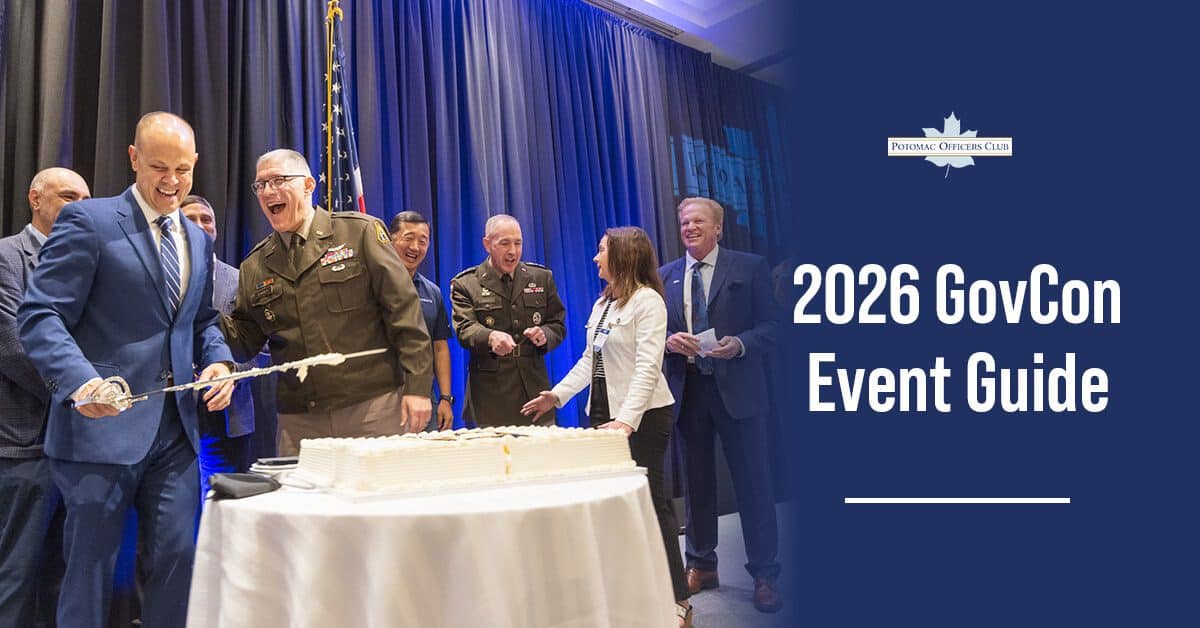
GovCon ‘National Teams’ Likely to Compete for Golden Dome
Golden Dome, the highly-anticipated U.S. homeland missile defense program, is likely to feature a “national team” construct of teams of defense GovCons competing for contracts, according to a top industry official.
Trey Obering, Booz Allen executive counsel and former executive vice president for directed energy, said at the Potomac Officers Club’s 2025 Air and Space Summit that the Missile Defense Agency, when he was there, stood up a pair of national teams in 2001 and 2002.
One was to build out the Command and Control, Battle Management and Communication, or C2BMC, system for the overall Integrated Air and Missile Defense system.
Continue the conversation from the Air and Space Summit during part two of our Golden Dome industry panel at the Potomac Officers Club’s 2025 Navy Summit on August 26! Strike up new teaming arrangements with other GovCon titans. Discover how the Navy will contribute to Golden Dome. Only at the 2025 Navy Summit. Secure your seat today and get an advantage on your competitors at this elite GovCon conference!
Obering said the second national team was MDA’s system engineering integration group. These teams were often isolated from their parent companies and received sole source awards.
He said isolating these teams allowed the MDA to get required talent for performing on missile defense programs. But the agency had mixed results with this national team approach as he said one was fairly successful while the other was a lot more challenging.
Regardless, Obering expects not only a national team approach to Golden Dome contracting but perhaps a more exclusive strategy.
“I do believe that…we’re going to have the national team of national teams,” for Golden Dome
What Is Different About Missile Defense Contracting?
Missile defense programs often feature contracting arrangements that allow acquisition officials to bypass the typical laws and regulations governing traditional acquisition efforts. Obering said when he was MDA director, from 2004 to 2008, he could trade requirements with the U.S. Strategic Command, or STRATCOM, director who had collected requirements from the services. He also had total acquisition authority, including milestone decision authority for programs, and had total top line budget authority while being exempt from financial management.
Cooperation from Congress was key. Obering said his streamlined structure allowed him to move money around between programs without having to get permission from multiple congressional committees. Additionally, Obering said he had a recent meeting with House Armed Services Committee Chairman Michael Rogers and Ranking Member Adam Smith, who Obering said would be willing to release some control on Golden Dome to help the program move forward.
“I know that [in] my discussions with Mike, he does have the authority I just articulated, which is very very important,” Obering said. “I think, frankly, we have the leadership, not just a matter of the will, resources and technology. I think we have that as well.”
National Team Approaches to Contracting
One example of a national team approach to contracting was in 2012. Lockheed Martin, as a prime contractor leading a consortium of five major companies, was awarded a follow-on contract with an estimated value of $980 million to continue work on C2BMC. This consortium, known as the Missile Defense National Team, was to continue development, operations and sustainment work.
Another example comes from 2018. ExecutiveBiz reported at the time that the MDA intended to award a contract to a consortium led by Boeing to help the agency integrate and engineer the Ballistic Missile Defense System.
This team, called National Team-Engineering, was to continue the group’s BMDS engineering support duties that involved system guidance, integration, data product delivery and development. Boeing was to be the prime contractor on the project and supervise the assimilation of technologies including space and mobile sensors, hypersonic threat defense systems and homeland defense radars. This proposed contact was also to be sole-sourced with a three-year base period and two one-year options.
Will Golden Dome Protect Hawaii?
Golden Dome will have a portion of the system in Hawaii, Reuters reported on August 12. The architecture will include four layers, one satellite-based and three land-based, with 11 short-range batteries found across lower 48 U.S. states, Hawaii and Alaska. The system is expected to cost $175 billion, but this is subject to change because the number of interceptors, launchers, missile sites and ground stations have not been determined.
DOD may not want service officials speaking publicly about Golden Dome. But that doesn’t stop the Potomac Officers Club! The 2025 Navy Summit on August 26 is your best opportunity to get the details about DOD’s Golden Dome acquisition strategy from high-ranking industry executives. Strategize your offering before the request for proposal is released on October 1. Prepare your GovCon firm for boosted revenues in FY 2026!

Category: Articles





